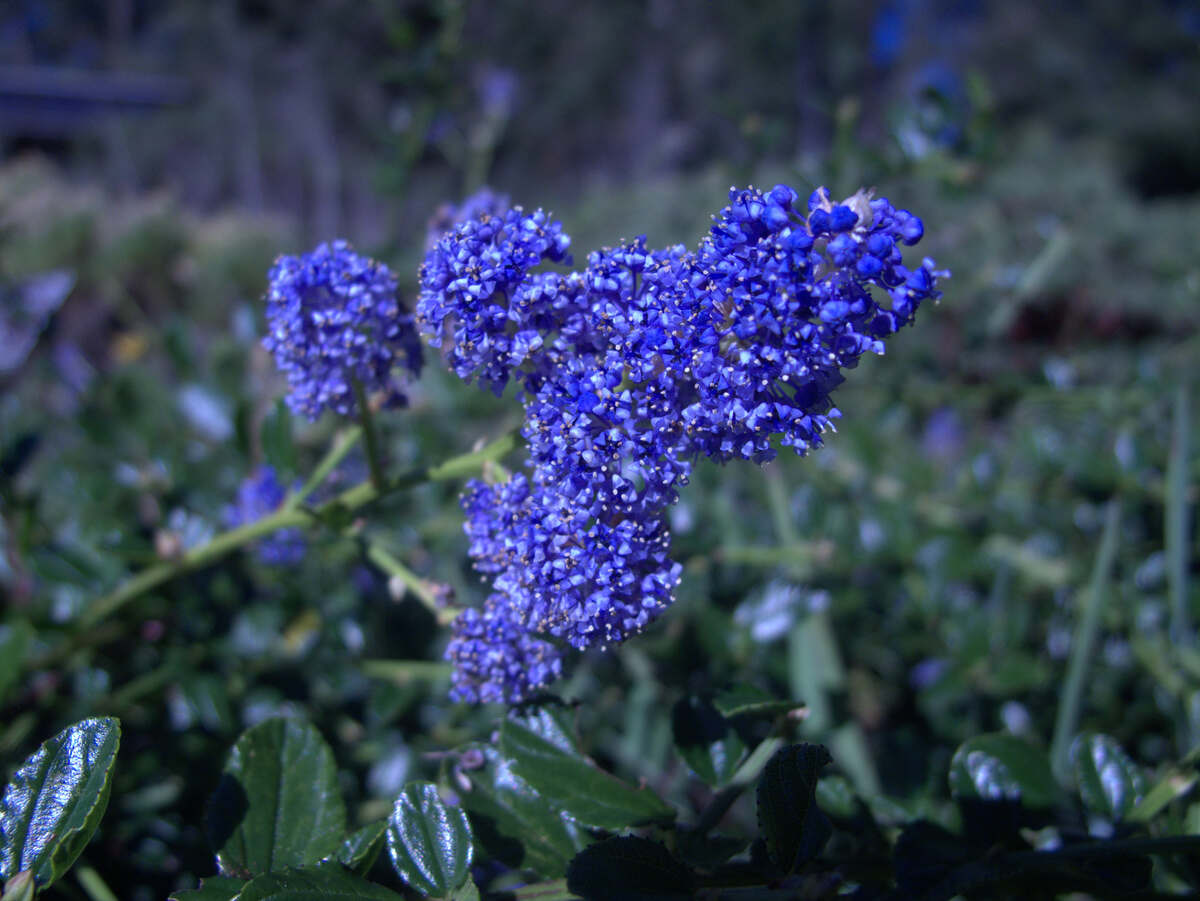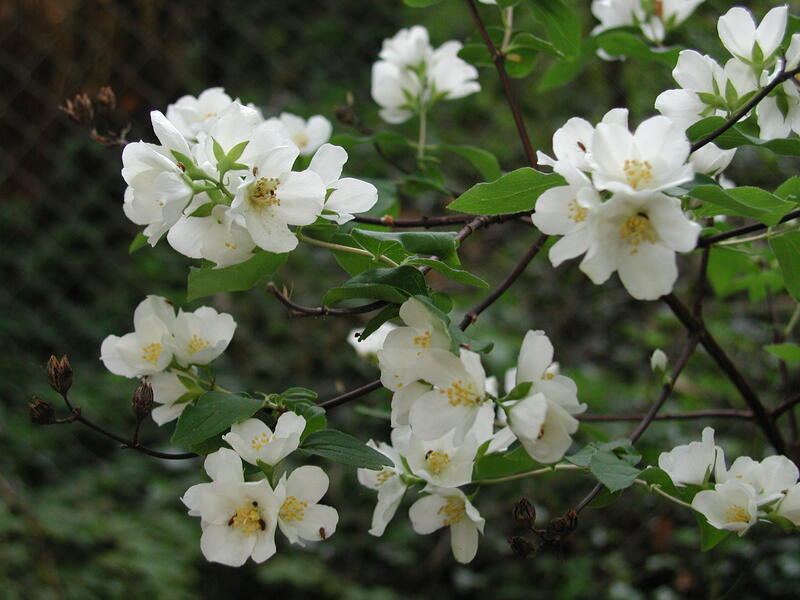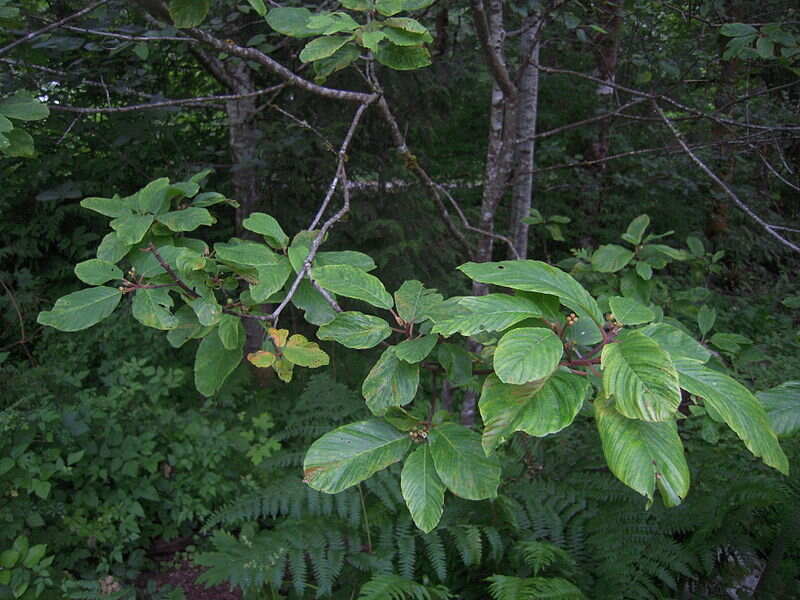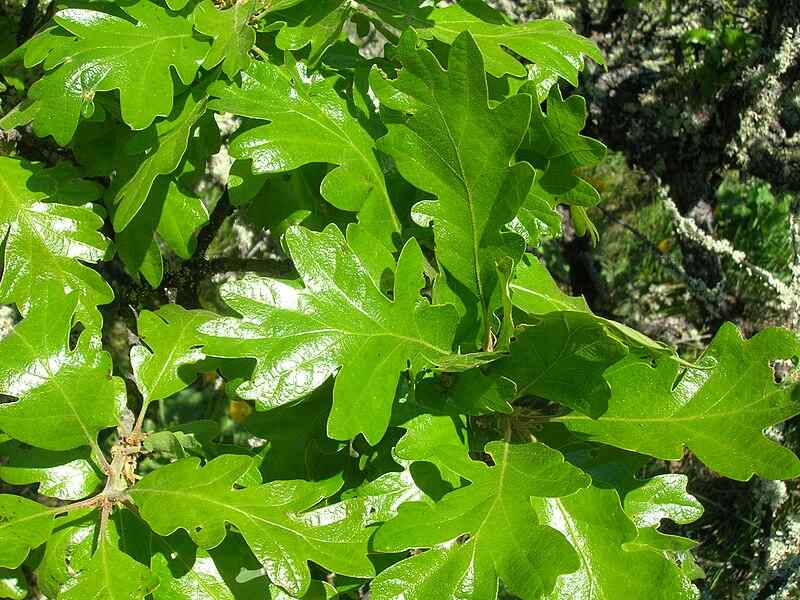
Calling all nature enthusiasts and green thumbs of Oregon! Brace yourselves for an exploration into the world of Oregon native plants, where we’ll uncover the vibrant and hardy plants that thrive right here in the Beaver State.
This article will tell you everything you need to know about Oregon’s native plants, from their soil requirements to their bloom time and maintenance needs. We’ll also guide you in choosing the best ones for your landscape, allowing you to create a beautiful and sustainable environment that reflects the natural wonders of this beloved state.
What are Native Plants?
Native plants are an integral part of Oregon’s diverse and vibrant ecosystems. These plants have grown in the region for thousands of years and have evolved to be well-adapted to the local climate conditions.
Whether it’s the wet winters and dry summers of western Oregon or the desert climate of eastern Oregon, native plants thrive in these environments, making them an excellent choice for landscaping and gardening projects.
They also play a crucial role in supporting the local ecosystem by providing habitat and food sources for a wide range of wildlife, including birds, bees, butterflies, and other pollinators.
Oregon Native Flowers
Western Red Columbine (Aquilegia formosa)

The western red columbine is a charming wildflower that resembles garden columbines but possesses unique characteristics. This plant showcases smaller, delicate red and yellow nodding flowers, which attract bees, butterflies, and birds.
- Plant type: Wildflower
- USDA Hardiness Zone: 3 – 9
- Sun: Full sun to partial shade
- Soil: Chalky, clay, loamy, or sandy soil that’s well-drained and nutrient-rich
- Duration: Perennial
- Foliage: Deciduous
- Bloom time: April to August
- Water needs: Moderate
- Mature height: 1 – 3 feet
- Potential hazards: Contains toxins that can cause stomach issues or heart palpitations
- Region: From Alaska to Baja California, and eastward to Montana and Wyoming.
Pacific Bleeding Heart (Dicentra formosa)

The pacific bleeding heart is a delicate wildflower that showcases heart-shaped pink flowers with fern-like foliage. It adds a whimsical touch to any garden. While it is resistant to rabbits and deer, it’s important to note that it can cause skin irritation. Hence, wearing gloves when handling it is advisable.
- Plant type: Wildflower
- USDA Hardiness Zone: 3 – 9
- Sun: Thrives in partial shade, tolerates full sun and full shade.
- Soil: Moist, well-drained, humus-rich soil
- Duration: Perennial
- Foliage: Deciduous
- Bloom time: March to September
- Water needs: Low to moderate
- Mature height: 1 – 2 feet
- Potential hazards: Toxic to humans and animals. Causes sickness when ingested and is a possible skin irritant.
- Region: Pacific Coast
Camas (Camassia leichtlinii)

The camas is a wildflower adorned with stunning violet flowers. This plant requires consistent moisture during the spring season. However, once the seed pods mature and the leaves dry out, they can tolerate seasonal drought without harm. Its adaptability adds to its appeal, making it a unique and resilient addition to Oregon landscapes.
- Plant type: Wildflower
- USDA Hardiness Zone: 5 – 9
- Sun: Full sun to partial shade
- Soil: Sandy, loamy, and clay soils
- Duration: Perennial
- Foliage: Deciduous
- Bloom time: April to August
- Water needs: Moderate
- Mature height: 1-3 feet
- Region: British Columbia to California
Oregon Native Shrubs
Blueblossom (Ceanothus thyrsiflorus)

The blueblossom, also called California lilac or mountain lilac, paints the landscape with vibrant colors during spring. This remarkable shrub showcases numerous clusters of delicate flowers, ranging from soft pale blues to rich and deep lilacs. It not only pleases the eye but also beckons a plethora of pollinators.
- Plant type: Shrub
- USDA Hardiness Zone: 8-10
- Sun: Full sun
- Soil: Dry, well-drained soil
- Duration: Perennial
- Foliage: Evergreen
- Bloom time: March, April, May, June
- Water needs: Low
- Mature height: 6 – 20 feet
- Region: Coastal California and southwestern Oregon
Red Flowering Currant (Ribes sanguineum)

The red flowering currant is a large shrub that delights with clusters of drooping magenta flowers, attracting hummingbirds with their nectar-rich blooms. This plant grows quickly, bringing vibrant colors to the landscape in no time.
- Plant type: Flowering shrub
- USDA Hardiness Zone: 6 – 8
- Sun: Full sun to partial shade
- Soil: Can tolerate most soils but prefers well-drained, moist soils
- Duration: Perennial
- Foliage: Deciduous
- Bloom time: January to July
- Water needs: Moderate
- Mature height: 5 – 12 feet
- Region: Coastal California to British Columbia
Douglas Spirea (Spiraea douglasii)

The Douglas spirea, also known as hardhack spiraea, is a remarkable shrub that boasts gray-green leaves with silver undersides. It catches the eye with its cone-shaped clusters of pink flowers, creating a visual feast for nature enthusiasts.
- Plant type: Shrub
- USDA Hardiness Zone: 5 – 8
- Sun: Full sun to partial shade
- Soil: Prefers moist soils
- Duration: Perennial
- Foliage: Deciduous
- Bloom time: May to September
- Water needs: Low
- Mature height: 4 – 10 feet
- Region: Western North America, from Alaska across southwestern Canada and the Pacific Northwest.
Red Elderberry (Sambucus racemosa)

The red elderberry is a remarkable large shrub that showcases clusters of creamy white flowers and vibrant red berry-like fruits. Beyond its visual charm, this shrub offers ecological benefits — it attracts a variety of pollinators, including bees, butterflies, and hummingbirds.
- Plant type: Shrub
- USDA Hardiness Zone: 3 – 7
- Sun: Full sun to partial shade
- Soil: Moist and well-drained
- Duration: Perennial
- Foliage: Deciduous
- Bloom time: May, June
- Water needs: Moderate
- Mature height: 8 – 20 feet
- Potential hazards: Seeds are poisonous; raw berries are toxic
- Region: Found throughout most of the states, including Oregon
Evergreen Huckleberry (Vaccinium ovatum)

The evergreen huckleberry is a charming shrub that brings joy with its clusters of pinkish-white flowers and enticing black fruits. Although it doesn’t grow quickly, this plant rewards patience with its unique beauty. It needs watering during establishment.
- Plant type: Shrub
- USDA Hardiness Zone: 7 – 9
- Sun: Full sun to shade
- Soil: Poor, acid, well-drained soil
- Duration: Perennial
- Foliage: Evergreen
- Bloom time: February to July
- Water needs: Low
- Mature height: Up to 8 feet
- Region: West of the Cascades
Hairy Manzanita (Arctostaphylos columbiana)

The bristly or hairy Manzanita is a special shrub adorned with light-green leaves, white flowers, and vibrant red fruits during the summer. This resilient plant thrives in sunny south or west-facing sites, adding its unique charm and adaptability to any landscape.
- Plant type: Shrub
- USDA Hardiness Zone: 8 – 11
- Sun: Full sun to partial shade
- Soil: Dry, rocky, or sandy soils
- Duration: Perennial
- Foliage: Evergreen
- Bloom time: January to May
- Water needs: Low
- Mature height: Up to 15 feet
- Region: Coastal areas from California to British Columbia
Oregon Grape (Berberis/Mahonia aquifolium)

The Oregon grape, showcasing its effortless beauty, proudly represents local flora as the state flower of Oregon. One of the standout features of this shrub is its abundance of bright yellow flowers and easy-to-care nature. It requires little maintenance, making it a hassle-free addition to any garden or landscape.
- Plant type: Flowering shrub
- USDA Hardiness Zone: 5 – 9
- Sun: Full sun to shade
- Soil: Prefers rich, well-drained soils
- Duration: Perennial
- Foliage: Evergreen
- Bloom time: March to June
- Water needs: Low
- Mature height: Up to 6 feet
- Region: Northern California to the Pacific Northwest
Creambush Oceanspray (Holodiscus discolor)

The creambush oceanspray amazes with its large hanging clusters of tiny white flowers. These clusters resemble the spray of the ocean or the gentle waves, bringing a touch of natural beauty to your landscape. Best of all, it’s a stunning plant that requires minimal effort to maintain.
- Plant type: Flowering shrub
- USDA Hardiness Zone: 6 – 9
- Sun: Full sun to partial shade
- Soil: Prefers well-drained but moist soil
- Duration: Perennial
- Foliage: Deciduous
- Bloom time: April to August
- Water needs: Low to moderate
- Mature height: 3 to 15 feet
- Region: Pacific Northwest coastal regions
Mock Orange (Philadelphus lewisii)

The mock orange is a lovely shrub that brings joy with its clusters of fragrant white flowers during the spring season. It holds the special status of being Idaho’s state flower while also being native to Oregon’s landscapes.
- Plant type: Flowering shrub
- USDA Hardiness Zone: 3 – 8
- Sun: Full sun to partial shade
- Soil: Grows well in various soils, from heavy clay to sandy
- Duration: Perennial
- Foliage: Deciduous
- Bloom time: March to July
- Water needs: Low
- Mature height: Up to 12 feet
- Potential hazards: Can cause irritation to sensitive skin
- Region: British Columbia to central California, and Montana.
Red Osier Dogwood (Cornus sericea)

The red osier dogwood is a shrub with clusters of delicate white flowers, followed by small, pea-sized white berries. One of the notable characteristics of this plant is its vibrant red twigs. These eye-catching branches create a bold contrast against the winter backdrop, bringing life to the otherwise subdued landscape.
- Plant type: Shrub
- USDA Hardiness Zone: 3 – 8
- Sun: Partial shade
- Soil: Moist, well-drained soils
- Duration: Perennial
- Foliage: Deciduous
- Bloom time: May to October
- Water needs: Moderate to high
- Mature height: 6 – 16 feet
- Region: Widespread except for the southeastern U.S.
Pacific Ninebark (Physocarpus capitatus)

The Pacific ninebark is a shrub often found along stream banks in the wild, thriving in moist environments. Its leaves resemble those of maple trees, and during the spring season, they adorn themselves with clusters of small white flowers, enhancing their beauty.
- Plant type: Flowering shrub
- USDA Hardiness Zone: 3 – 8
- Sun: Full sun to partial shade
- Soil: Prefers slightly acidic, moist soils
- Duration: Perennial
- Foliage: Deciduous
- Bloom time: Late spring
- Water needs: Low
- Mature height: Up to 20 feet
- Region: From southern Alaska to southern California and Idaho
Western Serviceberry (Amelanchier alnifolia)

The Western Serviceberry is a shrub with substantial size, often reaching the stature of a small tree. During the flowering season, the Western Serviceberry reveals its enchanting white flowers. As the season progresses, they give way to purple berries, which can be eaten fresh in pies, or dried like raisins, offering a delicious treat.
- Plant type: Shrub or small tree
- USDA Hardiness Zone: 4 – 9
- Sun: Full sun to partial shade
- Soil: Loamy or sandy, well-drained
- Duration: Perennial
- Foliage: Deciduous
- Bloom time: April, May, June
- Water needs: Low
- Mature height: 3 – 16 feet
- Region: From Alaska to California, and across the Great Plains
Pacific Rhododendron (Rhododendron macrophyllum)

The Pacific rhododendron is a stunning plant known for its leathery foliage and dazzling pink flowers. Its eye-catching blooms and lush green leaves add natural beauty to any landscape. However, it’s important to note that this shrub has high watering needs, particularly when grown away from the coast.
- Plant type: Flowering shrub
- USDA Hardiness Zone: 6 – 8
- Sun: Partial shade
- Soil: Moist to dry, well-drained soil
- Duration: Perennial
- Foliage: Evergreen
- Bloom time: April – July
- Water needs: High
- Mature height: 5 – 15 feet
- Potential hazards: Moderate toxicity, can cause digestive disturbances
- Region: Coastal Pacific Northwest
Bitter Cherry (Prunus emarginata)

The bitter cherry is a drought-tolerant, hassle-free shrub that often reaches up to 50 feet. Though its red fruits are not edible for humans, they serve as a delightful feast for wildlife, attracting a variety of creatures to your yard. In addition, this shrub graces the spring season with its white flowers that emit a lovely almond scent.
- Plant type: Shrub or small tree
- USDA Hardiness Zone: 5 – 9
- Sun: Full sun to shade
- Soil: Prefers moist soils with good drainage
- Duration: Perennial
- Foliage: Deciduous
- Bloom time: April to July
- Water needs: Moderate
- Mature height: Up to 50 feet
- Potential hazards: Seeds found inside the fruits contain poisonous substances and should not be eaten.
- Region: From British Columbia south to Baja California, and east as far as western Wyoming and New Mexico
Nootka Rose (Rosa nutkana)

The Nootka (or Nutka) rose is a captivating shrub with solitary, large, soft-pink flowers called hips. These beautiful blooms serve as a magnet for pollinators and birds, adding life and vitality to your garden. However, it’s important to note that the Nootka rose tends to spread and can become invasive if not properly managed.
- Plant type: Flowering shrub
- USDA Hardiness Zone: 5 – 9
- Sun: Full sun to partial shade
- Soil: Tolerates a wide range of soils, prefers well-drained but moist soils
- Duration: Perennial
- Foliage: Deciduous
- Bloom time: April to August
- Water needs: Low to moderate
- Mature height: 2 – 12 feet
- Potential hazards: Watch out for thorns
- Region: Coastal areas from Alaska to California, east to the Cascades
Oregon Native Trees
Red Alder (Alnus rubra)

The red alder, also known as Oregon alder, is a magnificent deciduous tree native to the Pacific Northwest. This tree features dark-green leaves that provide a vibrant display throughout the growing season. Its smooth, light-gray bark adds to its aesthetic appeal. In addition, it serves as a valuable food source for several bird species.
- Plant type: Tree
- USDA Hardiness Zone: 7a – 9b
- Sun: Full sun, partial shade
- Soil: Prefers moist, mineral soil
- Duration: Perennial
- Foliage: Deciduous
- Bloom time: March – April
- Water needs: High
- Mature height: 40 – 80 feet
- Region: Pacific Coast, from southeast Alaska to southern California
Bigleaf Maple (Acer macrophyllum)

The bigleaf maple is a majestic tree commonly found in Oregon’s streamside hardwood forests since they thrive in moist areas. During the spring, the bigleaf maple showcases yellowish flowers that serve as a vital food source for many bees.
- Plant type: Tree
- USDA Hardiness Zone: 7 – 10
- Sun: Full sun
- Soil: Prefers cool, moist soils
- Duration: Perennial
- Foliage: Deciduous
- Bloom time: April – May
- Water needs: High to moderate
- Mature height: 40 – 80 feet
- Potential hazards: Prone to problems with decay
- Region: West side of the Cascades
Cascara (Rhamnus purshiana)

The cascara, also known as buckthorn, is a small tree that offers numerous benefits, particularly for smaller yards or gardens. Its compact size makes it an excellent choice for limited spaces, allowing homeowners to enjoy the beauty and benefits of a tree without overwhelming their surroundings.
- Plant type: Tree/Shrub
- USDA Hardiness Zone: 7a – 8b
- Sun: Full sun to partial shade
- Soil: Prefers infertile, moist soils
- Duration: Perennial
- Foliage: Deciduous
- Bloom time: March – July
- Water needs: Moderate
- Mature height: Up to 35 feet
- Region: Southern British Columbia to Northern California
Western Red Cedar (Thuja plicata)

Standing tall and majestic, the Western red cedar has aromatic foliage that emits a fragrance, adding a sensory element to any landscape it graces. This tree is also highly valued for its durability and versatility. Its wood is naturally rot-resistant and possesses excellent dimensional stability, making it ideal for shingles.
- Plant type: Tree
- USDA Hardiness Zone: 5 – 8
- Sun: Full sun to partial shade
- Soil: Prefers moist, slightly acidic soils
- Duration: Perennial
- Foliage: Evergreen
- Bloom time: April
- Water needs: Moderate
- Mature height: Up to 200 feet
- Potential hazards: Must be careful with power lines above it.
- Region: Pacific Coast, including western Washington, western Oregon, and northern California. It’s also present in a section east of the Cascade Range from central Oregon to southern British Columbia.
Western Crabapple (Malus fusca)

The western crabapple, also known as Oregon crabapple, is a beautiful tree that displays delicate white to pink blossoms, creating a stunning visual spectacle during the blooming season. The flowers are visually appealing and emit a fragrant scent, adding a delightful aroma to the surrounding environment.
- Plant type: Tree
- USDA Hardiness Zone: 6-9
- Sun: Full sun to partial shade
- Soil: Prefers moist soils, tolerates heavy clay soils
- Duration: Perennial
- Foliage: Deciduous
- Bloom time: April – July
- Water needs: Moderate to high
- Mature height: Up to 65 feet
- Potential hazards: The leaves contain hydrogen cyanide, which can cause respiratory failure and death in excess.
- Region: Along the Pacific Coast, from southern Alaska to Northern California
Pacific Madrone (Arbutus menziesii)

The Pacific madrone stands as a testament to nature’s artistic expression. This enchanting tree, native to the Pacific Northwest, is renowned for its reddish bark, glossy green leaves, and dazzling display of urn-shaped, white-to-pink flowers and berries.
- Plant type: Tree
- USDA Hardiness Zone: 8-9
- Sun: Partial shade to full sun
- Soil: Prefers well-drained soils
- Duration: Perennial
- Foliage: Evergreen
- Bloom time: Mid to late spring
- Water needs: Low
- Mature height: 30 – 75 feet
- Potential hazards: Sheds debris
- Region: Coastal Pacific Northwest
Oregon White Oak (Quercus garryana)

The Oregon white oak, also known as Garry oak, is a testament to strength and longevity, earning its place as an iconic tree of the region. Despite being a slow grower, this majestic species offers numerous benefits for homeowners seeking shade in their yards while also playing a vital role in supporting birds and other wildlife.
- Plant type: Tree
- USDA Hardiness Zone: 7-9
- Sun: Full sun
- Soil: Prefers dry, infertile soil
- Duration: Perennial
- Foliage: Deciduous
- Bloom time: March, April, May
- Water needs: Low
- Mature height: Up to 100 feet
- Potential hazards: Acorns and young leaves have low toxicity if eaten
- Region: In Oregon, this tree is primarily located west of the Cascade Range, in the Willamette, Umpqua, and Rogue River valleys.
Vine Maple (Acer circinatum)

The vine maple is an excellent choice for shaded areas in your yard that could benefit from a touch of greenery. With its striking red and white flowers in spring and a stunning transformation of foliage in the fall, this tree offers a beautiful sight.
- Plant type: Shrub or small tree
- USDA Hardiness Zone: 5 – 9
- Sun: Partial shade
- Soil: Loam, sand, clay, moist, well-drained soil
- Duration: Perennial
- Foliage: Deciduous
- Bloom time: March, April, May
- Water needs: Moderate
- Mature height: 15 – 30 feet
- Potential hazards: None
- Region: Not ideal for eastern Oregon, more common west of the Cascades. A very common native plant in Portland.
Ponderosa Pine (Pinus ponderosa)

The Ponderosa pine stands tall as a majestic conifer, known for its rapid growth and impressive longevity. The Willamette Valley variety is particularly recommended for those seeking to cultivate the Ponderosa pine west of the Cascades.
- Plant type: Tree
- USDA Hardiness Zone: 3-7
- Sun: Full sun to partial shade
- Soil: Deep, sandy, gravelly, or clay loams
- Duration: Perennial
- Foliage: Evergreen
- Bloom time: April
- Water needs: Moderate
- Mature height: 60 – 150 feet
- Potential hazards: Beware of power lines.
- Region: Primarily the Rocky Mountains
Douglas-Fir (Pseudotsuga menziesii)

The Douglas-fir (Pseudotsuga menziesii) is an impressive tall conifer known for its pointed crown that reaches for the sky. It has two varieties: the Coast Douglas-fir and the Rocky Mountain Douglas-fir. This remarkable tree is significant as one of the world’s most important timber species.
- Plant type: Tree
- USDA Hardiness Zone: 4-6
- Sun: Full sun to partial shade
- Soil: Tolerates a wide range of soils, including igneous and limestone-based
- Duration: Perennial
- Foliage: Evergreen
- Bloom time: April
- Water needs: Moderate
- Mature height: 75-150 feet
- Potential hazards: Beware of power lines.
- Region: Various regions in the West
How to Choose Native Plants for Your Oregon Landscape?
When choosing native plants for your Oregon landscape, a few essential factors affect their success. First, it’s crucial to consider whether you’re in western or eastern Oregon since the climates differ between these regions.
You’ll experience warm and dry summers and wet winters in western Oregon. The native plants here are resilient enough to withstand the dry summer spells while benefiting from the rainy winters. On the other hand, eastern Oregon has colder winters with snowfall, and the plants in this region are well adapted to handle the lower temperatures.
Another important consideration is the amount of shade in your landscape. Some native species thrive in full sun, while others prefer partial or full-shade environments. Additionally, you’ll want to pay attention to the soil composition. Understanding your soil’s characteristics will help you choose plants that thrive in your specific conditions.
FAQ on Oregon Native Plants
The Oregon coast is home to many plants, many of which have been mentioned throughout this article as native species suitable for Oregon landscapes. Here are some other examples not mentioned so far:
• Coast penstemon
• Western azalea
• Wavy-leaved silk-tassel
• Kinnikinnick
• Coastal strawberry
• Salal
• Sword fern
Oregon is fortunate to have many native plants that thrive in shade or partial shade conditions. These plants offer an excellent opportunity to add beauty and greenery to areas with limited sunlight. Here are a few native Oregon plants that can grow in full shade:
• Wild cherry
• Vine maple
• Evergreen huckleberry
• Oregon grape
• Oregon wood-sorrel
• Pacific bleeding heart
• Sword fern
The most common tree you’ll find across the picturesque landscapes of Oregon is the Douglas-fir (Pseudotsuga menziesii), which proudly holds the esteemed title of the state’s official tree.
This tree plays an economical and ecological role — its wood serves as the backbone for large-scale construction projects, and it supports a thriving ecosystem for birds, caterpillars, and other native wildlife.
Bring in the Landscaping Pros
Embracing Oregon native plants in your landscape enhances the natural beauty of your surroundings, supports the ecosystem, and reduces maintenance needs — so why not do it?
Looking for an Oregon landscaping care pro near you? Look no further! We have trusted landscaping professionals in many cities across the Beaver State, including Portland, Salem, and Eugene.
Main Image Credit: John Rusk / Flickr / CC BY 2.0